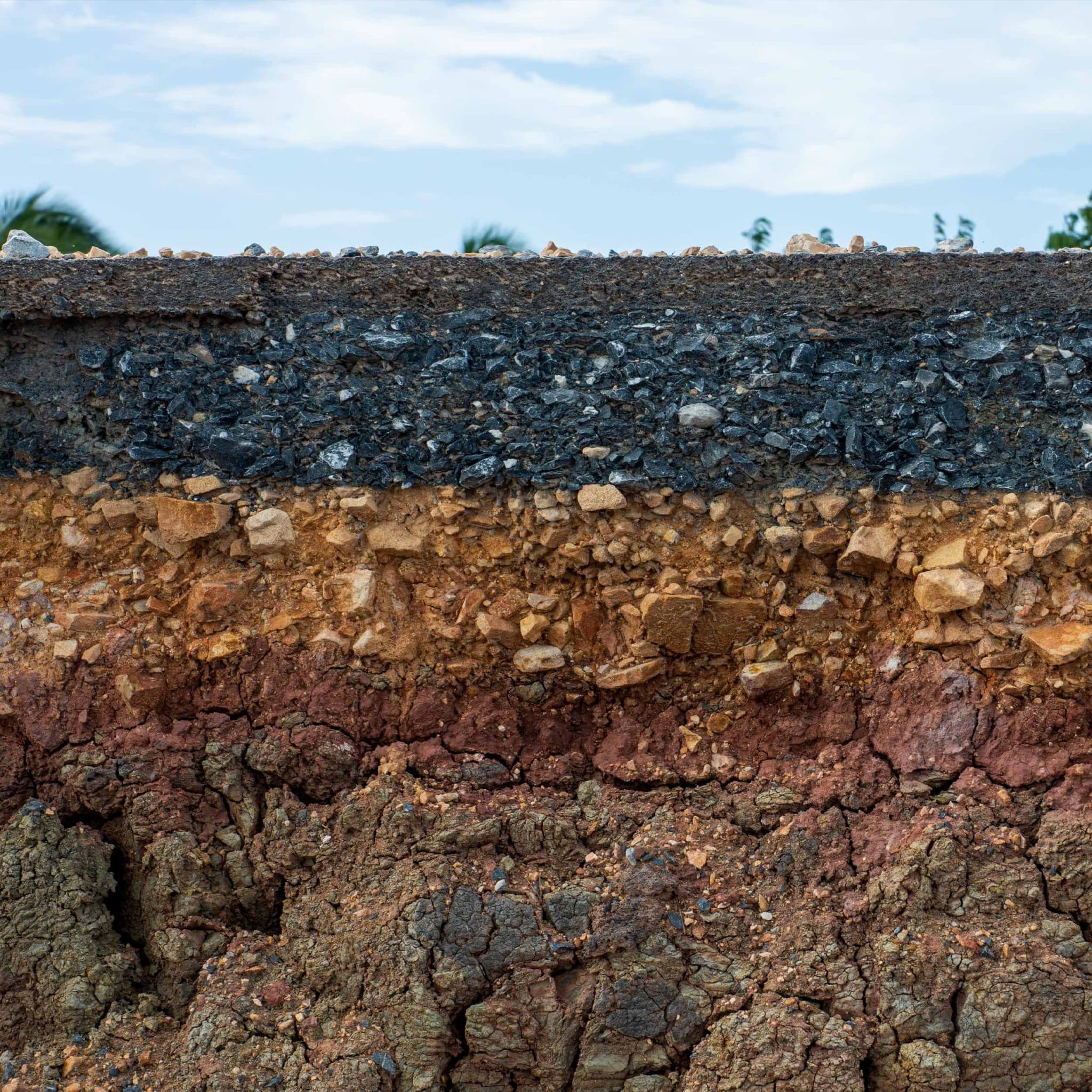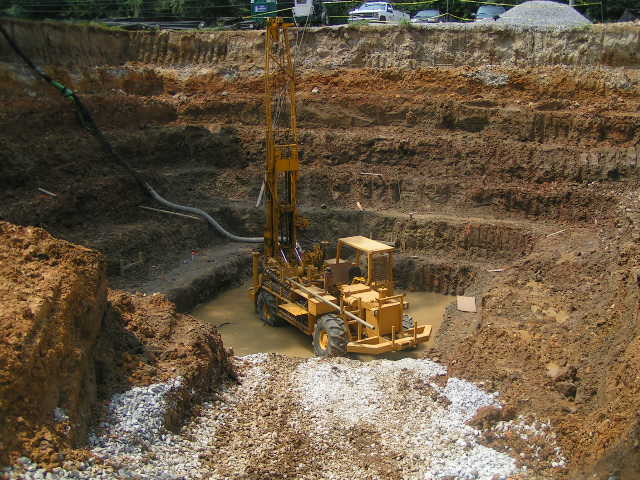Cutting-edge Uses of Geotheta in Modern Geotechnical Method
Wiki Article
Diving Into Geotechnical Services: the Crucial Duty of Soil Analysis, Earthquake Threat Assessment, and Geosynthetics in Building Lasting and Safe Structures
Dirt evaluation, earthquake risk analysis, and the execution of geosynthetics are vital components that ensure the honesty and durability of buildings. By comprehending the structure of the soil, predicting seismic threats, and integrating ingenious products, engineers can mitigate threats and boost the strength of infrastructure.
Value of Dirt Evaluation
Understanding the value of dirt analysis is important in making certain the architectural honesty and stability of any building task. Soil evaluation gives essential info regarding the dirt make-up, stamina, and possible risks that may impact the structure of a framework. By performing comprehensive dirt analysis, engineers can determine the suitable foundation layout, building methods, and required safety measures to alleviate any type of potential hazards.Among the main reasons soil analysis is crucial is its duty in determining soil buildings that can influence the security of a building. Elements such as soil bearing capability, negotiation attributes, and water material can dramatically affect the architectural performance of a building and construction task. Without appropriate dirt analysis, the foundation might go to danger of resolving erratically, leading to structural damage and even collapse with time.
Additionally, soil evaluation helps in analyzing the danger of natural disasters such as earthquakes, floods, or landslides. By understanding the dirt's habits under different conditions, engineers can carry out appropriate measures to boost the durability of the framework and make certain the safety of owners. geotheta. In verdict, soil evaluation is a fundamental step in the building procedure that should never ever be forgotten
Assessing Earthquake Risks
Provided the vital duty of soil evaluation in determining structural stability, it is vital to also examine earthquake risks when preparation and constructing buildings and facilities. Quake danger analysis involves evaluating the prospective seismic risks that a website may deal with based upon its location and geological qualities. This procedure aids developers and engineers comprehend the degree of danger posed by earthquakes and help in making structures that can endure such events.Evaluating quake threats usually entails studying historic seismic task in the region, figuring out the website's proximity to fault lines, and examining the dirt structure to predict exactly how the ground will reply to seismic waves. By conducting an extensive earthquake risk assessment, engineers can carry out appropriate mitigation actions, such as integrating seismic-resistant layout attributes right into structures, to improve their strength against earthquakes.

Duty of Geosynthetics
Geosynthetics play a crucial function in enhancing the efficiency and toughness of civil design frameworks. One vital element of geosynthetics is their reinforcement capability, where they can boost the strength of dirts, giving enhanced assistance for roads, embankments, and preserving wall surfaces.In addition, geosynthetics work as obstacles, supplying security against water seepage, chemicals, and other unsafe materials that might jeopardize the structural integrity of a task. They are additionally made use of in water drainage applications to promote the effective flow of water, avoiding saturation and erosion of dirt. In enhancement to their technological features, geosynthetics are valued for their sustainability, as they can minimize the need for all-natural sources and lower construction prices. Overall, the calculated incorporation of geosynthetics is important for guaranteeing the durability and security of modern-day framework tasks.
Structure Lasting Structures
The execution of ecologically conscious practices in building and construction is crucial for cultivating the development of lasting frameworks. Building lasting structures includes utilizing products and design strategies that minimize ecological effect, lower energy usage, and advertise long-term strength. Integrating lasting techniques such as utilizing recycled products, maximizing energy effectiveness, and carrying out green building accreditations like LEED can considerably improve the ecological efficiency of a structure.One key facet of structure sustainable structures is the effective use sources. This includes developing structures that maximize natural light, ventilation, and insulation to minimize the dependence on fabricated lighting, heating, and cooling down systems. In addition, incorporating eco-friendly energy sources such as solar panels or wind turbines can even more lower the carbon footprint of a building while also potentially reducing long-lasting energy expenses.
In addition, lasting frameworks often prioritize water conservation by integrating attributes like rain harvesting systems, low-flow components, and drought-resistant landscape design. By taking on these environmentally pleasant techniques, building and construction projects can not just reduce their ecological influence but also add to producing healthier and extra durable developed environments for future generations.
Ensuring Safety in Construction
In the world of lasting construction methods, a fundamental priority is guaranteeing the safety and security of all workers entailed in the structure process. Security in building and construction encompasses different elements, consisting of the use of correct individual safety equipment (PPE), adherence to security protocols, regular training on threat recognition and mitigation, and the application of emergency situation response strategies.
Verdict
Finally, dirt evaluation, quake danger assessment, and making use of geosynthetics play vital duties in guaranteeing the sustainability and security of frameworks. By understanding the properties of soil, assessing earthquake risks, and utilizing geosynthetics for reinforcement, engineers can build structures that are both durable and durable. geotheta.com It is vital for building professionals to focus on these geotechnical solutions to create safe and sustainable structures for the future.Soil evaluation, quake threat assessment, and the execution of geosynthetics are important elements that guarantee the stability and long life of buildings. Dirt evaluation gives crucial info regarding the soil structure, strength, and prospective risks that may impact the foundation of a framework.One of the main reasons soil evaluation is essential is its role in recognizing dirt residential properties that might influence the security of a building.In conclusion, dirt analysis, earthquake risk analysis, and the use of geosynthetics play crucial roles in ensuring the sustainability and security of frameworks. By comprehending the properties of soil, assessing quake risks, and utilizing geosynthetics for reinforcement, designers can construct frameworks that are both durable and resistant.
Report this wiki page